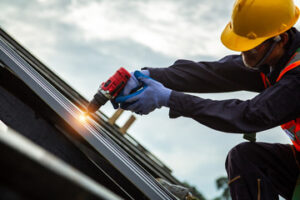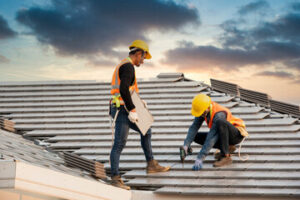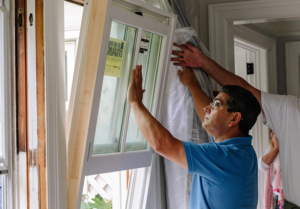Commercial Cleaning Services Baltimore are different than janitorial services and focus on bigger cleaning projects. They use specialized tools that aren’t usually available to residential cleaners.

Commercial spaces have a lot of foot traffic and require regular disinfection to keep the space healthy for their employees and customers. Choosing the right company is important to ensure your business stays clean and safe.
A clean work environment is important for many reasons. It can improve employee morale and increase productivity, and it can also help businesses maintain a positive image with customers. Professional commercial cleaners understand the importance of a clean workspace and can provide a range of cleaning services that can meet the needs of any business, no matter its size or industry.
A professional cleaning service can also ensure that your workplace is free of germs and contaminants, which can cause illnesses. These contaminants can spread quickly and lead to a lot of stress and lost time for employees. Professional commercial cleaners will use products and techniques that are safe for your business and its staff, and they will be able to provide you with a detailed report after each cleaning session.
When you’re looking for a commercial cleaning company, it’s important to take your time and compare quotes before making a decision. It’s often not a good idea to go with the lowest-priced option, as this might not be the best choice for your business. You should instead focus on finding a company that can offer you the best value for your money and that will give you quality results.
Another factor to consider is a company’s accessibility and customer support. It’s crucial that the management team of a commercial cleaning company is accessible and willing to answer any questions or address any concerns you may have. This will help to minimize confusion and ensure that all of your issues are dealt with promptly and effectively.
One last thing to keep in mind is that the cost of a cleaning company can vary depending on the services they offer. Some companies offer different rates at different times of day, and some even offer discounts for weekends or overnight cleanings. You should always ask about these costs and what each company’s services include before you make a decision. Also, be sure to ask about any additional charges or fees that might apply, such as cleaning supplies or a minimum number of visits per month.
We’re Fully Insured
A commercial cleaning company is equipped with the tools, training and equipment to keep your workplace or commercial space looking clean. These services can include sanitizing bathrooms, vacuuming and mopping floors, dusting, and cleaning windows and other surfaces. They may also offer additional specialized services such as floor waxing, carpet shampooing or graffiti removal. Some companies may offer deep cleaning, which is a more thorough, top-to-bottom cleaning of areas that may not be regularly cleaned.
When selecting a cleaning company, look for one that specialises in your type of business. A general cleaning company might quote cheaply but won’t be able to meet the unique needs of your industry and premises. If they’re unsure of the types of chemicals or cleaners to use, or how to properly clean a certain area, ask them for a sample or a client list so you can be confident they can do a good job.
The reputation of your business can depend on how clean and well maintained your office or commercial space is. If your facility is messy and unorganized, it sends a message that you don’t care about your clients or employees. On the other hand, a clean environment demonstrates that you are organized and care about your business.
Depending on your location and the number of employees in your cleaning business, you may be required to carry specific insurance or bonds. Workers’ compensation insurance, for example, is a legal requirement in most states and covers medical bills and lost wages if an employee is injured at work. You might also need a janitorial bond to comply with your lease agreement and show that you are a reputable cleaning business.
If your business requires traveling between sites, make sure your commercial cleaning company has the proper commercial auto insurance coverage. This will cover any medical or property damage expenses if your cleaning staff are in an accident in a company vehicle. This type of policy is usually inexpensive and can be added to your business insurance package. Other policies that you might need include commercial general liability insurance, which is a standard policy that protects your business from lawsuits for third-party injuries or property damage.
We’re Fully Trained
Commercial Cleaning services provide a wider range of cleaning jobs than your average house cleaner. They are trained to clean areas on a larger scale or in environments that require specialised cleaning products, equipment and procedures. It is also their job to stay informed on changing guidelines, new cleaning solutions and technologies. They also train their cleaning staff to understand and use these.
Office cleaning is an essential part of any company. Dirty offices can spread germs and make people sick. This can affect productivity and morale. Professional commercial cleaners know the right tools to use and how to properly clean different surfaces in high traffic areas. They are also skilled at vacuuming, mopping and wiping floors. They also know the importance of keeping trash bins emptied on a regular basis.
Hospitality Cleaning – Hotel cleaning is another area where professional commercial cleaners have extensive knowledge and expertise. They will know the right equipment and cleaning solutions to use in each room and how to sanitise corridors. They will also be familiar with all the local regulations for disposing of waste.
Janitorial Cleaning – A team of janitors is necessary for many businesses to keep their spaces hygienic and clean. This includes restocking supplies, responding quickly to spills or messes, dusting and wiping surfaces, taking out the trash, and maintaining the floors by sweeping, mopping and buffing. Depending on the industry, some janitorial services may be required to perform specialized cleaning tasks such as sanitizing surgery rooms or disposing of biohazard materials.
Industrial Cleaning – Industrial cleaning is a more complex service than a typical business or office space. These companies often need to clean factories and warehouses that produce things like pharmaceuticals, building supplies, chemicals or general manufacturing. Their facilities can be very large and contain a lot of machinery that needs to be cleaned regularly. Cleaning crews also need to be familiar with the processes and hazards involved in each factory they work in.
When choosing a commercial cleaning service you should ensure they have a proven track record and experience in your type of business or location. It’s also a good idea to ask for verification that their cleaners have undergone a background check. This can give you peace of mind that they are safe to be in your premises.
We’re Flexible
Commercial Cleaning Services can be tailored to your needs. You can choose to have your space cleaned on a weekly, bi-weekly, monthly, or one-time basis depending on your preference and budget. This flexibility allows you to get the services that are necessary to keep your business looking its best without breaking the bank.
Commercial cleaning companies can provide a wide range of services for your business, including general cleaning, janitorial work, and disinfecting. They can clean carpets and other textile coverings, polish surfaces from various materials, service doors and walls, elements of decor, take care of glass surfaces, and more. Additionally, many services can be arranged to be done outside of business hours so that your staff is not distracted from their jobs while the cleaning is taking place.
The biggest benefit of a Commercial Cleaning Service is the time they can save you or your employees. Hiring a professional cleaner can free up time for your staff to focus on important tasks related to their job duties, allowing them to grow the company, attend to customers, or focus on strategic planning. It is also much safer for employees to delegate cleaning responsibilities to professionals who are trained and skilled in using high-powered cleaning equipment.
Additionally, many commercial cleaning services will offer waste removal and recycling services to ensure that all trash is disposed of correctly. This can help prevent diseases, reduce pollution, and maintain a clean environment for employees and customers alike.
Finally, Commercial Cleaning Services can tackle bigger cleaning jobs that are too big for your business’s regular janitorial staff to handle. This can include removing large pieces of furniture, cleaning and sanitizing restrooms and kitchen spaces, and unclogging sinks and drains. It is essential that a commercial cleaning service have the manpower and resources to take on these kinds of projects so that your business can continue operating as usual.
Having a trusted and reliable Commercial Cleaning Service can give your business a professional and polished look that will impress customers and clients. It can even contribute to your company’s success by promoting a positive image, attracting new clients, and increasing revenue.








